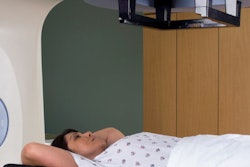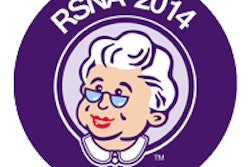Children who received three or more radiation-based diagnostic imaging studies had higher rates of developing leukemia later in life, according to a new study by California researchers published this week in the October issue of the International Journal of Epidemiology.
A research group from the University of California, Berkeley wanted to look at the relationship between leukemia and postnatal imaging exams using radiation-based modalities. Previous studies have offered conflicting results on whether radiation-based imaging increases leukemia risk, according to lead author Karen Bartley and colleagues (Int J Epidemiol, Vol. 39:4, pp. 1-10).
The researchers examined a study population of 827 individuals up to age 15, drawn from the Northern California Childhood Leukemia Study (NCCLS). All had been diagnosed with acute lymphoid leukemia (ALL, n = 711) or acute myeloid leukemia (AML, n = 116) between 1995 and 2008. They were compared to normal controls selected from the California birth registry and matched according to various demographic factors.
After excluding patients who had radiation-based imaging studies taken in the year prior to diagnosis, the researchers found a statistically significant risk of ALL in the children who had been exposed to three or more postnatal radiation-based imaging studies, with an odds ratio of 1.85 (95% confidence interval [CI]: 1.12-2.79). That compares to an odds ratio of 1.0 for children with no exams, and an odds ratio of 1.06 (95% CI: 0.83-1.36) for children with one or two radiation-based studies.
For B-cell ALL, specifically, the researchers found that any exposure to x-rays at all (one or more studies) conferred an increased risk, with an odds ratio of 1.40 (95% CI: 1.06-1.86).
There was no association found between the number of radiation-based imaging exams and AML or T-cell ALL, and region of the body exposed to radiography also was not a factor in developing leukemia. There was also no association with an individual's age at first exposure to diagnostic radiation.
One shortcoming of the study was that the NCCLS database did not distinguish whether an imaging exam received was plain radiography or CT. Although the researchers determined that children who received three or more exams had higher leukemia rates compared to those who received less, there is no way to ascertain the type of imaging studies that children received. They noted that the radiation dose from a CT scan can be 50 times or greater than the dose from plain radiography.
"We did observe a dose-response relationship, suggesting higher risk associated with a greater number of x-rays, so it is not unreasonable to conclude that higher dose procedures, e.g., CT scans, may confer greater risk," Bartley told AuntMinnie.com.
By Brian Casey
AuntMinnie.com staff writer
October 6, 2010
Related Reading
Child cancer survivors have higher heart risk, December 10, 2009
Lasting cognitive problems seen in survivors of childhood CNS cancers, November 4, 2009
Childhood cancer survivors susceptible to diabetes, August 11, 2009
Copyright © 2010 AuntMinnie.com




















